
"I don't pretend to understand my stuff. After all, my writing is very difficult." - Marshall McLuhan

"In the future, everyone will have privacy for 15 minutes." - Bob Dobbs











![et cetera : LOVE [1977]](https://blogger.googleusercontent.com/img/b/R29vZ2xl/AVvXsEgQ8s7vwLQuzHDNgqlfBacxRkEbOErToak9kmgFl0VmyIYEqS9qIzNIVcXKpzTncPhqo3TSgOyztAguIW6OlXw65aFHmpx6cRzmvCUQQMTwUGUOd0iE0GbJakEc3g3kBAJrvlZP4z3eesg/s1600/etc1977.jpg)






![MAC LUHAN [sic] : LOST IN TRANSLATION](https://blogger.googleusercontent.com/img/b/R29vZ2xl/AVvXsEg92tMqBMDA917NDivsS2ZwIirx9KTf24tOCgFFnK65p7Hw5dvqEh1e2aefCynj2UW8u-k8zwBXbjgypsCXUcv-5G7ZCsyDB13giHEjmhVISAeW-oI_JV6ePOXW_XBDPwy2nREAoqRU7Z8/s1600/MAC.jpg)

















![Les Yeux De Nadja [unpublished]](https://blogger.googleusercontent.com/img/b/R29vZ2xl/AVvXsEgrXohpIuxxYyjKoqBSQf3TpYGjnttZnjRFvmMdshadfnVKi7PMAjIqEuqYctZFXOFH2n-oH75oJx-YkaON7xvaZgVdvaK0zfSOurEmCKqmWF6qXh2F3VbqyixfGhvY4qH6LENMTs1wCIw/s1600/2xsurreal.jpg)











![PIED PIPERS [MARSH] ALL](https://blogger.googleusercontent.com/img/b/R29vZ2xl/AVvXsEhqvGIGG9lWZYhFZRVc_V8EJG2apQBsys4kNQOQsA0EV6H6Tg-SMN0sX15NXy_GzsF3xAUdcb2QlfvJk-RU-Rha-3Eu5Mnglkf5KLe6pccVqAP4VR_Gi4fGQ716QSmDe3Zna5Uwct5d2sw/s1600/piedPiperMarshALL270.png)












































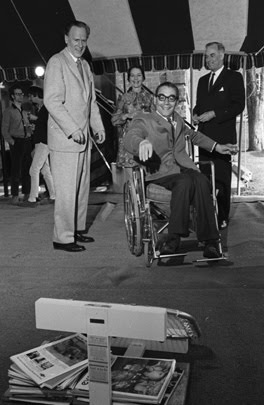






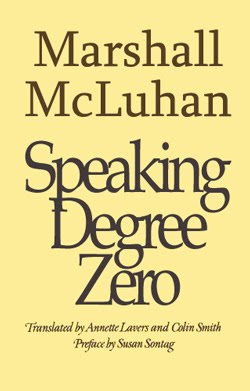





















![more Hidden ground [re:Bride] : the "flippancy" of tone seemed just "right"](https://blogger.googleusercontent.com/img/b/R29vZ2xl/AVvXsEg-hQyF9KGGhKYc73nUGmV1bStJ4fTJVh0-TL1ZtikLZEv5ppjhB3DOhFcVuzGq-kByrwtTAWgCcE173pA3UTIPe7h6xJjsPt7lRvNym007ZsdXenMDLNimKcwtaTOqkGleoxmXOeCKtxXL/s1600-r/LEAVISLEWIS.png)












![BABA WAWA [TODAY SHOW, Toronto City Hall 1970]](https://blogger.googleusercontent.com/img/b/R29vZ2xl/AVvXsEjTZAIFkA07K36WGk951vmZnLPU99fOdNzlvVhyphenhyphenhKZEKu2n2AW5EA1CDZGaTk0aYRXUv7IOXG39igaikoE6SWm8j7QIG96wYRE54oBXwvlaNCJzp15vdkrcqR97IMMny-8sHjM-VDotTOaY/s1600-r/babaWawa.jpg)

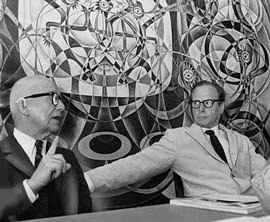

![enter the dragon : "typhon in america" [unpublished]](https://blogger.googleusercontent.com/img/b/R29vZ2xl/AVvXsEjdCnZdJ6JbaLc6hyUmUJo5UJ0m8WZSj_afYU9oRlHKIUgAIfcy2EPHNAptSRYEAmpOf0Xaa0B8iMgOTF302lY0Xmbyne0hvrdRyNo-t0Q-PPdzqX39uI3T5x5FppRPaQf9sSaXytrOpWVN/s1600-r/TIA.jpg)



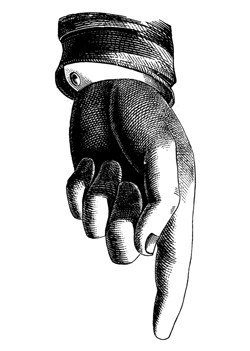

















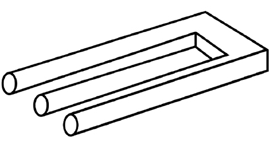









![Take Today [1972] : "the consumer becomes a producer..."](https://blogger.googleusercontent.com/img/b/R29vZ2xl/AVvXsEhA53bdVdTaXdQo1fDmrsI8oiAwF-3jampcanOq8uk3QMh8_ImkNsTiKd4-RnZY8Vbwqh1fymJiyCl1CSLcSonXHQM6XbnJYQi_Vu89gbAV4jVq73EtlbM3w6CthyphenhyphenV_pHEjE6eu_VhC489u/s1600-r/PROSUMER.jpg)




































Literally, Understanding Media is a kit of tools for analysis and perception. It is to begin an operation of discovery. It is not the completed work of discovery. It is intended for practical use. Most of my work in the media is like that of a safecracker. In the beginning I don’t know what’s inside. I just set myself down in front of the problem and begin to work. I grope, I probe, I listen, I test — until the tumblers fall and I’m in. That’s the way I work with all these media.
I’m perfectly prepared to scrap any statement I ever made about any subject once I find that it isn’t getting me into the problem. I have no devotion to any of my probes as if they were sacred opinions. I have no proprietary interest in my ideas and no pride of authorship as such. You have to push any idea to an extreme, you have to probe. Exaggeration, in the sense of hyperbole, is a major artistic device in all modes of art. No painter, no musician ever did anything without extreme exaggeration of a form or a mode, until he had exaggerated those qualities that interested him.
- McLuhan Hot + Cool, Stearn, 1967: 58, 62-63

























Stan Lee : " DON’T WRITE DOWN TO YOUR READERS! It is common knowledge that a large portion of comic magazine readers are adults, and the rest of the readers who may be kids are pretty sharp characters. They are used to seeing movies and listening to radio shows… a great deal of thought goes into every story; and there are plenty of gimmicks, sub-plots, human interest angles…. "






















![mars[HAL]9000 : " Tomorrow is our permanent address."](https://blogger.googleusercontent.com/img/b/R29vZ2xl/AVvXsEhmblupqmUiuV3GbyayJiDRGEO63TEgwjHi-i8b0kVYDvXrKFWTCyl-e21la4QJXC4nDFDzx51Omi6fYPLJcqRHFoP6zSsL0CVZF98eMf6mxCE2WDfvMmT4q9G3X45-P0IYGDmliE0fCR3C/s1600-r/marsHAL9000_250.jpg)







All situations are composed of an area of attention [figure] and a very much larger (subliminal) area of inattention [ground] ….Figures rise out of, and recede back into, ground….for example, at a lecture, the attention will shift from the speaker’s words to his gestures, to the hum of the lighting or street sounds, or to the feel of the chair or a memory or association or smell, each new figure alternatively displaces the others into ground…The ground of any technology is both the situation that gives rise to it as well as the whole environment (medium) of services and disservices that the technology brings with it. These are side effects and impose themselves willy-nilly as a new form of culture.


































































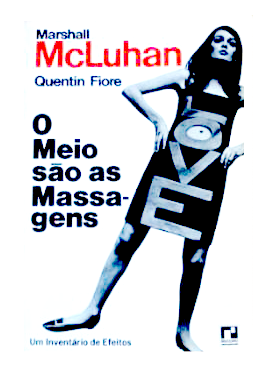































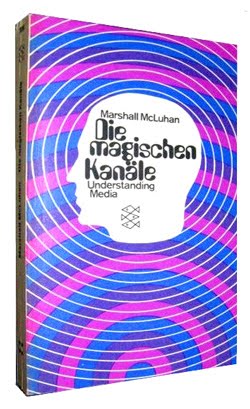














































































![Lucifer [from Latin] <br>meaning "light-bearer"](https://blogger.googleusercontent.com/img/b/R29vZ2xl/AVvXsEhq-2kZZOfh-Syv1Ewa0Ns2O6ZeP59pcsJp9ihhKcXCaovYZO_cKxffC5iSKOXFHr6E1jiHc6zedt1U6I95831RgpVdm3qk8-9C3y1yPyrCiQe4jgx-DsbeHnjKnw9t6Qx3ZM5TSYxiPj5H/s1600-r/lucifer.png)













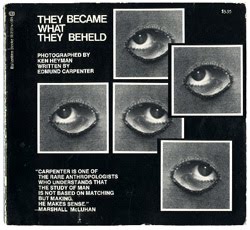




































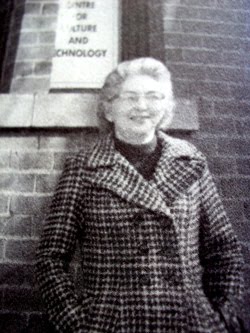






































"Don't tell me what's in the books. I've read them. Tell me what you've learned that you didn't already know.Then, we may both learn something new."




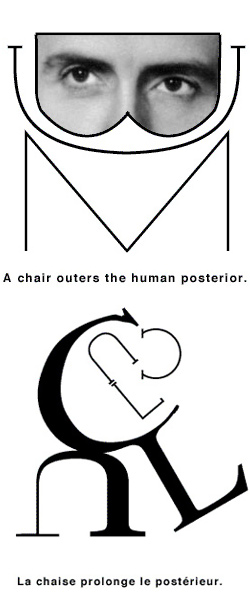





































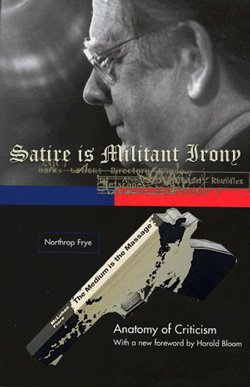




















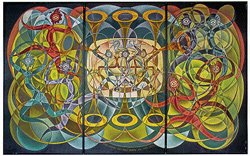








But I've never presented such explorations as revealed truth. As an investigator, I have no fixed point of view, no commitment to any theory -- my own or anyone else's. As a matter of fact, I'm completely ready to junk any statement I've ever made about any subject if events don't bear me out, or if I discover it isn't contributing to an understanding of the problem. The better part of my work on media is actually somewhat like a safe-cracker's. I don't know what's inside; maybe it's nothing. I just sit down and start to work. I grope, I listen, I test, I accept and discard; I try out different sequences -- until the tumblers fall and the doors spring open.
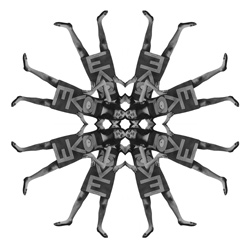





2 comments:
A LAST LOOK AT THE TUBE
Marshall McLuhan
New York Magazine 17 March 1978
With TV, Shakespeare's "All the World's a stage"
flipsinto "all the stage is a world", in which there is no
audience and everybody has become an actor, or participant.
When one says that "the medium is the message", it is to
point out that every medium whatever creates an environment
of services and disservices which constitutes the special
effect and character of that medium. Tony Schwartz points
out that one of the major aspects of the TV image is that
it uses the eye as an ear, since it is a resonating
audile-tactile form of innumerable gaps that have to be
filled in by the viewer: In watching television, our eyes function like our
ears. They never see a picture, just as our ears never hear
a word. The eye receives a few dots of light during each
successive millisecond, and sends these impulses to the
brain.(1)
It is this open-mesh image that is so entirely
involving, even to the point of inducing semi-hypnotic
trance;and this raises a matter that confuses many people
notfamiliar with the structural character of our sensory
experience. It was the symbolists who had stressed the
character of the discontinuous as the key to tactility and
involvement: their structures were never continuous or
connected statements so much as suggestive juxtapositions.
As Mallarme put it: "To define is to kill. To suggest is to
create." The simultaneous world of electric information is
always lacking in visual connectedness and always structured
by resonant intervals. The resonant interval, as Heisenberg
explains, is the world of touch, so that acoustic space is
simultaneously tactile.
Any medium presents a figure whose ground is always
hidden, or subliminal. In the case of TV, as of the
telephone and radio, the subliminal ground could be called
the discarnate or disembodied user. This is to say that when
you are "on the telephone", or "on the air", you do not have a
physical body. In these media, the sender is sent, and is
instantaneously present everywhere. The disembodied user
extends to all those who are recipients of electric
information. It is these people who constitute the mass
audience, because mass is a factor of speed rather than
quantity, although popular speech permits the term mass to
be used with large publics.
Discarnate man, deprived of his physical body, is
also deprived of his relationship to Natural Law and
physical law. As a discarnate intelligence, he is as
weightless as an astronaut, but able to move very much
faster. Minus the physical mesh of Natural Laws, the user
of electronic services is largely deprived of his private
identity. The TV experience is an inner trip, and is as
addictive as many known drugs.The discarnate TV user lives
in a world between fantasy and dream, and is in a typically
hypnotic state which is the ultimate form and level of
participation.
The world of fantasy is an inner world whereas the
world of dreams tends toward outer orientation and
aspiration and deferred gratification. On the other hand,
fantasies are instant and are their own satisfaction. The
discarnate TV user, with a strong bias toward fantasy,
dispenses with the real world, even in the newscasts. The
news automatically becomes the real world for the TV user
and is not a substitute for reality, but is itself an
immediate reality.
Death on TV is a form of fantasy: On television,
violence is virtually the sole cause of death; it is only
on soap operas, and then very rarely,that anyone dies of
age or disease. But violence performs its death-dealing
service quickly, and then the victim is whisked off camera.
The connection of death to real people and real feelings is
anonymous, clinical, and forgotten in the time it takes to
spray on a new and longer-lasting deodorant.(2)
The fantasy violence on TV is a reminder that the
violence of the real world is much motivated by people
questing for lost identity. Rollo May and others have
pointed out that violence in the real world is the mark of
those questing for identity. On the frontier everybody is a
nobody,and therefore the frontier manifests the patterns of
toughness and vigorous action on the part of those trying
to find out who they are.
A more characteristic form of identity quest under
electric conditions is the universal theme of nostalgia.
When our world exists only in fantasy and memory, the
natural strategy for identity is nostalgia, so that today
revivals occur so frequently that they are now called
"recurrences" (in the recording industry).
In his book Do It, Jerry Rubin wrote after the trial:
Television creates myths bigger than reality.
Whereas a demo drags on for hours and hours, TV packs all
the action into two minutes - a commercial for the
revolution. On the television screen, news is not so much
reported as created. An event happens when it goes on TV
and becomes a myth...Television is a non-verbal instrument,
so turn off the sound, since no one ever remembers any
words that they hear,the mind being a technicolour movie of
images, not words. There's no such thing as bad coverage
for a demo. It makes no difference what's said: the pictures
are the stories.(3)
The social myth is a kind of mask of one's time, a
"put on" which is also a form of body language. It is this
body language which relates the TV form of the right
hemisphere of the brain and brings us directly into relation
to TV politics. Whereas the left hemisphere is sequential
and logical, verbally connected and syntactic, the right
hemisphere is simultaneous and acoustic, emotional and
intuitive. The electric environment tends to give a lot of
stress and power to the right hemisphere, just as the old
industrial and literate environment had given corresponding
dominance to the left hemisphere. The left hemisphere had
been favored by the words of literacy, and of market
organization with its quantitative goals and specialist
structure. These worlds have been increasingly obsolesced
by the instant environment and instant replays that enhance
the simultaneous character of the right hemisphere.
Electronic or discarnate man is automatically
committed to the primacy of the right hemisphere. In
political terms the instant mask, a mythic structure, gives
sudden prominence to the charismatic image of the political
leader. He must evoke nostalgic memories of many figures
that have been admired in the past. Policies and parties
yield to the magic of the leader's image. The arguments in
the Ford/Carter debates were as insignificant as the fact
of their party affiliation.
If discarnate man has a very weak awareness of
private identity and has been relieved of all commitments to
law and morals, he has also moved steadily toward
involvement in the occult, on one hand, and loyalty to the
superstate as a substitute for the supernatural on the other
hand. For discarnate man the only political regime that is
reasonable or in touch with him is totalitarian - the state
becomes religion. When loyalty to Natural Law declines, the
supernatural remains as an anchorage for discarnate man; and
the supernatural can even take the form of the sort of
megamachines of the state that Mumford talks about as
existing in Mesopotamia and Egypt some 5,000 years ago. The
megamachines of North America, for example, can take the
form of the fifty-three billion dollar ad industry for
manipulating our corporate psyches, or they can be the
equally vast security systems constituted by what Peter
Drucker calls our "pension fund socialism":
Through their pension funds, employees of American
business today own at least 25 percent of its equity capital,
which is more than enough for control. The pension funds of
the self-employed, of the public employees, and of school
and college teachers own at least another 10 percent, giving
the workers of America ownership of more than one-third of
the equity capital of American business.(4)
Meantime, our own megamachine for daily living
presents us with the world as "a sum of lifeless artifacts",
as Erich Fromm explains:
The world becomes a sum of lifeless artifacts; from
synthetic food to synthetic organs, the whole man becomes
part of the total machinery that he controls and is
simultaneously controlled by. He has no plan, no goal for
life, except doing what the logic of technique determines
him to do. He aspires to make robots as one of the greatest
achievements of his technical mind, and some specialists
assure us that the robot will hardly be distinguished from
living men. This achievement will not seem so astonishing
when man himself is hardly distinguishable from a robot.(5)
When the viewer himself becomes a kind of
discarnate information pattern, the saturation of that
pattern of an electric environment of similar patterns gives
us the world of the contemporary TV user. This is a parallel
to the computer - the only technology that lives on, and
produces, the same material.
___________________________________________
(1)-Tony Schwarz,"The Responsive Chord"[New York:Anchor
Press1973],14
(2)-Frank Mankiewicz and Joel Swerlow,"RemoteControl:
Television and the Manipulation of American Life" [New York,
Quadrangle/the New York Times Book company,1978,from
unrevised galley proofs.
(3)-Jerry Rubin "Do it",as quoted in Malcolm
Muggeridge,"Christ and the Media:London Lectures in
Contemporary Christianity"[Toronto:Ecclesia Books,Hodder
&Stoughton,1977) 67
(4)-Peter Drucker,"The Unseen Revolution"(New York, Harper &
Row,1976,1
(5)-Erich Fromm, "The Anatomy of Human
Destructiveness"[Greenwich:Fawcett 1975]389
The future of education: The class of 1989
BY MARSHALL McLUHAN AND GEORGE B. LEONARD
from: LOOK magazine, February 21, pp. 23-25.
ABOUT THE AUTHORS [from: p. 24]
Marshall McLuhan is perhaps the most provocative and controversial thinker of this generation. His books, such as Understanding Media, have challenged many established notions about man and civilization. Now director of the Center for Culture and Technology at the University of Toronto, Professor McLuhan next fall will take the $100,000-a-year Albert Schweitzer Chair in the Humanities at Fordham University in New York. George B. Leonard, West Coast Editorial Manager and senior editor for LOOK, has received more national awards for education writing than anyone in the history of magazine journalism. Leonard often serves as an educational consultant on both the East and West Coast and has a book on education in progress. The authors' present collaboration grew from a series of intensive discussions in San Francisco and Toronto.
[p. 23] THE TIME IS COMING, if it is not already here, when children can learn far more, far faster in the outside world than within schoolhouse walls. "Why should I go back to school and interrupt my education?" the high-school dropout asks. His question is impudent but to the point. The modern urban environment is packed with energy and information --diverse, insistent, compelling. Four-year-olds, as school innovators are fond of saying, may spend their playtimes discussing the speed, range and flight characteristics of jet aircraft, only to return to a classroom and "string some more of those old beads." The 16-year-old who drops out of school may be risking his financial future, but he is not necessarily lacking in intelligence. One of the unexpected statistics of recent years comes from Dr. Louis Bright, Associate U.S. Commissioner of Education for Research. His studies show that, in large cities where figures are available, dropouts have higher average IQ scores than high-school graduates.
This danger signal is only one of many now flashing in school systems throughout the world. The signals say that something is out of phase, that most present-day schools may be lavishing vast and increasing amounts of time and energy preparing students for a world that no longer exists. Though this is a time of educational experiments, the real reforms that might be expected have as yet touched only a small proportion of our schools. In an age when even such staid institutions as banks and insurance companies have been altered almost beyond recognition, today's typical classroom --in physical layout, method and content of instruction-- still resembles the classroom of 30 or more years ago.
Resistance to change is understandable and perhaps unavoidable in an endeavor as complex as education, dealing as it does with human lives. But the status quo may not endure much longer. The demands, the very nature of this age of new technology and pervasive electric circuitry, barely perceived because so close at hand, will shape education's future. By the time this year's babies have become 1989's graduates (if college "graduation" then exists), schooling as we now know it may be only a memory.
Mass education is a child of a [p. 25] mechanical [next page] age. It grew up along with the production line. It reached maturity just at that historical moment when Western civilization had attained its final extreme of fragmentation and specialization, and had mastered the linear technique of stamping out products in the mass.
It was this civilization's genius to manipulate matter, energy and human life by breaking every useful process down into its functional parts, then producing any required number of each. Just as shaped pieces of metal became components of a locomotive, human specialists become components of the great social machine.
In this setting, education's task was fairly simple: decide what the social machine needs, then turn out people who match those needs. The school's function was not so much to encourage people to keep exploring, learning and, therefore, changing throughout life as to slow and control those very processes of personal growth and change. Providing useful career or job skills was only a small part of this educational matching game. All students, perhaps more so in the humanities than the sciences and technologies, were furnished standard "bodies of knowledge," vocabularies, concepts and ways of viewing the world. Scholarly or trade journals generally held a close check on standard perceptions in each special field.
Specialization and standardization produced close resemblance and, therefore, hot competition between individuals. Normally, the only way a person could differentiate himself from the fellow specialists next to him was by doing the same thing better and faster. Competition, as a matter of fact, became the chief motive force in mass education, as in society, with grades and tests of all sorts gathering about them a power and glory all out of proportion to their quite limited function as learning aids.
Then, too, just as the old mechanical production line pressed physical materials into preset and unvarying molds, so mass education tended to treat students as objects to be shaped, manipulated. "Instruction" generally meant pressing information onto passive students. Lectures, the most common mode of instruction in mass education, called for very little student involvement. This mode, one of the least effective ever devised by man, served well enough in an age that demanded only a specified
fragment of each human being's whole abilities. There was, however, no warranty on the human products of mass education.
That age has passed. More swiftly than we can realize, we are moving into an era dazzlingly different. Fragmentation, specialization and sameness will be replaced by wholeness, diversity and, above all, a deep involvement.
Already, mechanized production lines are yielding to electronically controlled, computerized devices that are quite capable of producing any number of varying things out of the same material. Even today, most U.S. automobiles are, in a sense, custom produced. Figuring all possible combinations of styles, options and colors available on a certain new family sports car, for example, a computer expert came up with 25 million different versions of it for a buyer. And that is only a beginning. When automated electronic production reaches full potential, it will be just about as cheap to turn out a million differing objects as a million exact duplicates. The only limits on production and consumption will be the human imagination.
Similarly, the new modes of instantaneous, long-distance human communication --radio, telephone, television--are linking the world's people in a vast net of electric circuitry that creates a new depth and breadth of personal involvement in events and breaks down the old, traditional boundaries that made specialization possible.
The very technology that now cries out for a new mode of education creates means for getting it. But new educational devices, though important, are not as central to tomorrow's schooling as are new roles for student and teacher. Citizens of the future will find much less need for sameness of function or vision. To the contrary, they will be rewarded for diversity and originality. Therefore, any real or imagined need for standardized classroom presentation may rapidly fade; the very first casualty of the present-day school system may well be the whole business of teacher-led instruction as we now know it.
Tomorrow's educator will be able to set about the exciting task of creating a new kind of learning environment. Students will rove freely through this place of learning, be it contained in a room, a building, a cluster of buildings or (as we shall see later) an even larger schoolhouse. There will be no distinction between work and play in the new school, for the student will be totally involved. Responsibility for the effectiveness of learning will be shifted from student to teacher.
As it is now, the teacher has a ready-made audience. He is assured of a full house and a long run. Those students who don't like the show get flunking grades. If students are free to move anywhere they please, however, there is an entirely new situation, and the quality of the experience called education will change drastically. The educator then will naturally have a high stake in generating interest and involvement for his students.
To be involved means to be drawn in, to interact. To go on interacting, the student must get some-where. In other words, the student and the learning environment (a person, a group of people, a book, a programmed course, an electronic learning console or whatever) must respond to each other in a pleasing and purposeful interplay. When a situation of involvement is set up, the student finds it hard to drag himself away.
The notion that free-roving students would loose chaos on a school comes only from thinking of education in the present mode --as teaching rather than learning-- and from thinking of learning as some-thing that goes on mostly in classrooms. A good example of education by free interaction with a responsive environment already exists, right before our eyes. Watch a child learn to talk or, for an even more striking case, watch a five-year-old learn a new language. If the child moves to a foreign country and is allowed to play intensely and freely with neighborhood children-with no language "instruction" whatever-he will learn the new tongue, ac-cent free, in two or three months. if instruction is attempted, however, the child is in trouble.
Imagine, if you will, what would happen if we set the five-year-old down in a classroom, allowed him to leave his seat only at prescribed times, presented only a few new words at a sitting, made him learn each group before going on to the next, drilled him on pronunciation, corrected his "mistakes," taught him grammar, gave him homework assignments, tested him and-wont of all-convinced him that the whole thing was work rather than play. In such a case, the child might learn the new language as slowly and painfully as do teenagers or adults. Should an adult try to learn a language by intense play and interaction, he would probably do much better than be would in a classroom, but still fall short of a young child's performance. Why? The adult has already learned the lessons that the old schooling teaches so well: inhibition, self-consciousness, categorization, rigidity and the deep conviction that learning is hard and painful work.
Indeed, the old education gives us a sure-fire prescription for creating dislike of any type of human activity, no matter how appealing it might seem. To stop children from reading comic books (which might be ill-advised), you would only have to assign and test them on their content every week.
Learning a new language is a giant feat, compared to which mastering most of the present school curriculum should prove relatively simple. Long before 1989, all sorts of equipment will be available for producing responsive environments in all the subject matter now commonly taught, and more. Programmed instruction, for example, creates high involvement, since it draws the student along in a sort of dialogue, letting him respond at frequent intervals. Programming at its best lets the student learn commonly-agreed-upon cultural techniques and knowledge-reading, spelling, arithmetic, geography and the like-in his own time, at his own pace. But present-day programming may soon seem crude in light of current developments. Computers will be able to understand students' written or spoken responses. (Already, they understand typed responses.) When these computers are hooked into learning consoles, the interplay between student and learning program can become even more intense.
When computers are properly used, in fact, they are almost certain to increase individual diversity. A worldwide network of computers will make all of mankind's factual knowledge available to students everywhere in a matter of minutes or seconds. Then, the human brain will not have to serve as a repository of specific facts, and the uses of memory will shift in the new education, breaking the timeworn, rigid chains of memory may have greater priority than forging new links. New materials may be learned just as were the great myths of [p. 25] past cultures-as fully integrated systems that resonate on several levels and share the qualities of poetry and song.
Central school computers can also help keep track of students as they move freely from one activity to another, whenever moment-by-moment or year-by-year records of students' progress are needed. This will wipe out even the administrative justification for schedules and regular periods, with all their anti-educational effects, and will free teachers to get on with the real business of education. Even without computers, however, experimental schools (see The Moment of Learning, LOOK, December 27, 1966) are now finding that fixed schedules and restrictions on students' movements are artificial and unnecessary.
Television will aid students in exploring and interacting with a wide-ranging environment. It will, for example, let them see into the atom or out into space; visualize their own brainwaves; create artistic patterns of light and sound; become involved with unfamiliar old or new ways of living, feeling, perceiving; communicate with other learners, wherever in the world they may be.
Television will be used for involvement, for two-way communication, whether with other people or other environmental systems. It will most certainly not be used to present conventional lectures, to imitate the old classroom. That lectures frequently do appear on educational television points up mankind's common practice of driving pell-mell into the future with eyes fixed firmly on the rearview mirror. The content of each brand new medium thus far has always been the ordinary stuff of the past environment.
The student of the future will truly be an explorer, a researcher, a huntsman who ranges through the new educational world of electric circuitry and heightened human interaction just as the tribal huntsman ranged the wilds. Children, even little children, working alone or in groups, will seek their own solutions to problems that perhaps have never been solved or even conceived as problems. It is necessary here to distinguish this explore story activity from that of the so-called "discovery method," championed by some theorists, which is simply a way of leading children around to standard perceptions and approved solutions.
Future educators will value, not fear, fresh approaches, new solutions. Among their first tasks, in fact, may be unlearning the old, unacknowledged taboos on true originality. After that, they may well pick up a new driving style in which they glance into the rearview mirror when guidance from the past is needed but spend far more time looking forward into the unfamiliar, untested country of the present and future.
In a sense, the mass-produced student of the present and past always turned out to be a commodity-replaceable, expendable. The new student who makes his own educational space, his own curriculum and even develops many of his own learning methods will be unique, irreplaceable.
What will motivate the new student? Wide variations between individuals will make competition as we now know it irrelevant and, indeed, impossible. Unstandardized life will not provide the narrow measures needed for tight competition, and schools will find it not only unnecessary but nearly impossible to give ordinary tests or grades. Motivation will come from accomplishment itself; no one has to be forced to play. Form and discipline will spring from the very nature of the matter being explored, just as it does in artistic creation. If the student of the future may be compared with the child at play, he also resembles the artist at work.
The little red schoolhouse will become the little round schoolhouse.
A strange dilemma seems to arise: It appears that, with the new modes of learning, all the stuff of present-day education can be mastered much more quickly and easily than ever before. Right now, good programmed instruction is cutting the time for learning certain basic material by one-half or one-third. What will students do with all the time that is going to be gained? The problem is not a real one. With students constantly researching and exploring, each discovery will on up a new area for study. There is no limit on learning.
We are only beginning to realize what a tiny slice of human possibilities we now educate. In fragmenting all of existence, Western civilization hit upon one aspect, the literate and rational, to develop at the expense of the rest. Along with this went a lopsided development of one of the senses, the visual. Such personal and sensory specialization was useful in a mechanical age, but is fast becoming outmoded. Education will be more concerned with training the senses and perceptions than with stuffing brains. And this will be at no loss for the "intellect." Studies show a high correlation between sensory, bodily development --now largely neglected-- and intelligence.
Already, school experimenters are teaching written composition with tape recorders (just as students play with these marvelous devices) in an attempt to retrain the auditory sense, to recapture the neglected rhythms of speech. Already, experimental institutes are working out new ways to educate people's neglected capacities to relate, to feel, to sense, to create. Future schooling may well move into many unexplored domains of human existence. People will learn much in 1989 that today does not even have a commonly accepted name.
Can we view this future, the hard and fast of it? Never, for it will always come around a corner we never noticed, take us by surprise. But studying the future helps us toward understanding the present. And the present offers us glimpses, just glimpses: Seven-year-olds (the slowest of them) sitting at electronic consoles finishing off, at their own pace, all they'll ever need in the basic skills of reading, writing and the like: eight-year-olds playing games that teach what we might call math or logic in terms of, say, music and the sense of touch; nine-year-olds joining together in large plastic tents to build environments that give one the experience of living in the Stone Age or in a spaceship or in an even more exotic place-say, 19th-century America: ten-year-olds interacting with five-year olds, showing them the basics (now unknown) of human relations or of the relationships between physical movements and mental states. In all of this, the school --that is, an institution of learning confined to a building or buildings-- can continue to hold a central position only if it changes fast enough to keep pace with the seemingly inevitable changes in the outside world. The school experience can well become so rich and compelling that there will be no dropouts, only determined drop-ins. Even so, the walls between school and world will continue to blur.
Already it is becoming clear that the main "work" of the future will be education. that people will not so much earn a living as learn a living. Close to 30 million people in the U.S. are now pursuing some form of adult education, and the number shoots skyward. Industry and the military, as well as the arts and sciences, are beginning to consider education their main business.
The university is fast becoming not an isolated bastion but an integral part of the community. Eventually, nearly every member of a community may be drawn into its affairs. The university of the future could offer several degrees of "membership," from everyday full-time participation to subscriptions to its "news service," which would be received in the home on electronic consoles.
Already, though not many journalists or college presidents realize it, the biggest news of our times is coming from research in the institutions of higher learning --new scientific discoveries, new ways of putting together the webs of past and current history, new means for apprehending and enjoying the stuff of sensory input, of interpersonal relations, of involvement with all of life.
The world communications net, the all-involving linkage of electric circuitry, will grow and become more sensitive. It will also develop new modes of feedback so that communication can become dialogue instead of monologue. It will breach the wall between "in" and "out" of school. It will join all people everywhere. When this has happened, we may at last realize that our place of learning is the world itself, the entire planet we live on. The little red schoolhouse is already well on its way toward becoming the little round schoolhouse.
Someday, all of us will spend our lives in our own school, the world. And education --in the sense of learning to love, to grow, to change-- can become not the woeful preparation for some job that makes us less than we could be but the very essence, the joyful whole of existence itself. END
FULL CITATION: McLuhan, M., & Leonard, G. B. (1967). The future of education: The class of 1989. Look, February 21, 23-24.
Post a Comment